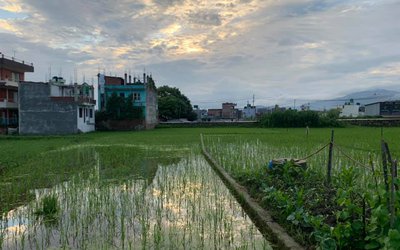Unemployment generally drops down during periods of economic growth and go up during recessions, causing significant pressure on public finances as tax revenue decreases and social support costs increase.
Unemployment generally drops during periods of economic growth and goes up during recessions, causing significant pressure on public finances as tax revenue decreases and social support costs increase.
Unemployment is associated with demand and supply. The economy performs well when production is high and the demand for labor becomes also high, that means unemployment is low. Conversely, when the economy is in doldrums, companies do not want many people that means unemployment is high.
Unemployment rates in the US varied from as low as 1% during World War I to as high as 25% during the Great Depression 1980 followed by the financial crisis 2008 and Covid -19 pandemic 2020 abnormally high. During COVID-19 pandemic, American unemployment saw a huge increase; more than 38 million Americans lost their jobs and applied for government aid, including nearly 4 million people in California, in the eight weeks since the coronavirus pandemic began.
There are a variety of factors that impact unemployment. First is cyclical unemployment; it occurs when there is not enough aggregate demand in the economy to provide jobs for everyone who wants to work.
Another one is frictional unemployment, which reflects the gap between someone voluntarily leaving a job and finding another.
The last one is structural unemployment, which is caused by a mismatch between the skills that workers in the economy can offer, and the skills demanded of workers by employers (also known as the skills gap). Structural unemployment is often brought about by technological changes that make the job skills of many workers obsolete.
In Nepal, the overemphasis on academic performance and the widespread interest among youths in getting a degree has led to the production of qualified but hardly employable graduates. They do not have the technical knowledge and skills.
Our industrial and service sectors are desperately short of skilled professionals. Therefore, the current crisis is not because of joblessness but lack of skills in the organized sector. There are job openings, but not the right candidates.
In year 2021, the unemployment rate in Nepal was 5.1%. It defined the number of unemployed people as percent of the labor force. The labor force includes the people who are either employed or unemployed, i.e., who don't have a job but are actively looking for one. The labor force does not include children, students, prisoners, retirees and does not have an interest in a job.
Currently, the total active workforce in Nepal is around 7 millions and out of it 1.7 million are unemployed. Everyday 1500 youths are going abroad for the jobs. External shocks of permanent labors from bordering India in Nepalese job market are unavoidable factors due to open borders. There are no scientific statistics, but it is estimated that their numbers are close to a million, more than Nepali work in India.
There are limited jobs, 25-30% in the formal sector of government and private institutions in Nepal. A large proportion of work forces are dependent on informal sectors. And every year, over 500,000 young people are entering the labor force.
Jobs are a critical point of the economy. Employment measures the economic health of the economy. GDP could be slower if the unemployment rate is high. It is believed that 4-6% unemployment is natural and more than 6% is supposed to be bad for the economy.
Nepal has been always failed in generating employment to its citizen in minimum level. As result of the declining nature of agriculture and manufacturing sectors are unable to absorb rural unemployed youths, previously which were the highest sources of employment,
Sudur Paschim, Karnali and Madhesh provinces are most hit by unemployment problems, from where hundreds of thousand people go for job to gulf countries and India compared to other provinces.
Age distribution and ethnicity participation are also important in employment. Unemployment rates are high among untouchables, lower castes compared to high castes population. Moreover, urban areas, especially the Kathmandu valley provide high opportunities for better jobs compared to rural areas.
Joblessness and job loss have a far-ranging effect on many parts of society. The families of unemployed people have a very hard time. Prolonged unemployment harms health, especially mental health, and shortens the lifespan. High unemployment can have a self-perpetuating negative impact on businesses and the economic health of the country, which in turn leads to a rise in poverty. Unemployed labor is a waste of the most important economic resource, human labor.
During the Covid-19 pandemic there was a collapse in demand and people lost their jobs. The pandemic did horrible damage to jobs. After the end of pandemic job creation has started, which is still fluctuating up and down.
During the pandemic period the hospitality industry and other important sectors of the Nepalese economy were in great loss and employment in those sectors was very low. After the end of Covid-19 , broad based, sustained revival of jobs seen in construction, hospitality, tourism, health, education and retail sectors.
Some improvement has been observed in narrowing down between male and female participations ratio in labor market. Previously when manufacturing sector was performing well, more male was in employment compared to women and now when service sectors started to dominate the economy, male participation ratio has been decreased and women participation is increasing in labor market.
The main objective of the county’s employment policy should be to increase employment opportunities and the productivity of labor. Government should adopt a policy that provides employment to all people.
It is essential that labor-intensive technology should be encouraged in place of capital-intensive technology.
Most people in Nepal are self-employed. They are engaged in agriculture, trade, cottage and small-scale industries etc. These people should be helped financially, providing raw materials and technical training.
To increase employment, it is essential to increase production in the agriculture and industrial sectors. Development of small and cottage industries should be encouraged. Moreover, programs like irrigation, roads, flood control, power, agriculture, rural electrification can provide better employment to people.
Decentralization of Industrial activity is necessary to reduce unemployment. If industrial activities are centralized in one place, there will be fewer employment opportunities in underdeveloped areas. So, Govt. should adopt such policies which encourage the decentralization of industrial activity.
And the government, at all levels, must increase their capacity to spend capital expenditure to support job creation.
Reservation in government jobs is playing some roles to narrow down ethnicity imbalances in employment as this sector is very small. Moreover, unemployment benefits and social security allowances have been supportive, even for small numbers of people, to run their daily life.
As there are fewer opportunities for employment in Nepal and its majority of working population are dependent on Gulf countries for jobs. If the Gulf countries stop hiring Nepali workers or send them back, due to unexpected crisis, there is going to be massive street demonstrations by the hordes of jobless people demanding work in Nepal. The government has no idea what the consequences will be. The government should come up with effective macro-economic policies and ensure improvements in the structure and functioning systems of governance to stabilize economic growth and create more jobs.
(Shrestha is a former Under Secretary at the Ministry of Finance and associated with UNDP Africa)

Hari Prasad Shrestha
He worked under Ministry of Finance, Nepal as Under Secretary and has been associated with the United Nations Development Program (UNDP) Sierra Leone and South Sudan and UNMISS.
- Encouraging Electric Vehicle Use In Nepal
- Dec 04, 2022
- How Could Rising Inflation Disrupt The Nepalese Economy?
- Nov 24, 2022
- The Hunger Game
- Oct 17, 2022
- Nepal's Over Dependency And Sluggish Development
- Sep 30, 2022
- Surplus Electricity - An Opportunity For Nepalese Industry And Export
- Jun 07, 2022












